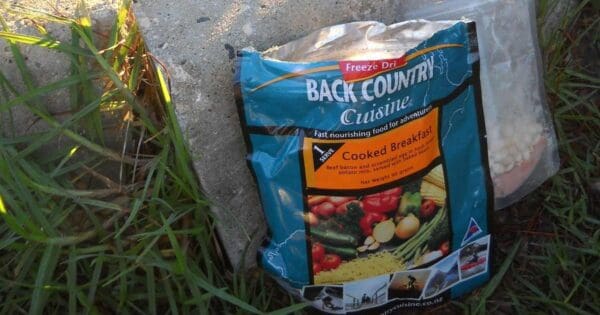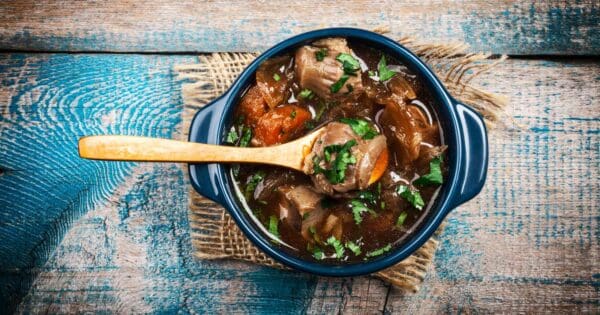Are you curious to know if hiking is an efficient way to burn calories? Do you want to know why calorie burning and energy expenditure varies from person to person and trail to trail? Well, you’re in the right place because that’s exactly what we will be discussing in this article! Keep on reading to get the full rundown on how much energy we use while hiking and bushwalking.
Key factors in calorie burn
When it comes to hiking, everyone burns calories at different rates. These rates are influenced by a variety of factors, including body weight, gender, age, fitness level, terrain type, temperature, metabolism, pack weight, distance, as well as speed and intensity.
Let’s take a look at a few of the most important factors!
1 – Body Weight
According to Livestrong.com, a person’s body weight plays a crucial role in how many calories they burn while hiking. A higher body mass means that you have to expend more energy simply moving your own weight around on the trail.
For example, a person who weighs 72 kg will burn around 1,800 kilojoules per hour of hiking, while a person who weighs 90 kg will burn around 2,300 kilojoules.
2 – Hike Length
As you would expect, the longer you hike, the greater the energy that you consume. This alone is unsurprising.
However, one of the interesting things about bushwalking is that the very act of hitting the trail and being outdoors actually boosts your mood substantially and encourages you to push yourself to go further than you normally would if walking or jogging on a treadmill.
This was confirmed by a 2013 study which tracked the energy expenditure of walkers, joggers and hikers in Australian national parks, which found that the hikers burned the most calories and pushed themselves the hardest. A 2017 study found similar benefits associated with hiking.
3 – Pack Weight
In a similar vein to one’s body weight, the extra weight a person carries while on a hike will contribute to the number of calories they burn. This is due to the fact that your body has to work harder and consequently use more calories to heft a backpack in addition to your own body weight.
Estimates vary, but it is thought that every extra kilogram of backpack weight increases your energy expenditure by at least 20 kJ per hour. If you are just going for a day walk, your pack will be pretty light and water will probably make up the majority of your total pack weight.
Those going on a multi-day walk, however, may have to carry gear like hiking tents, food, clothing, first-aid and more. All of this will substantially increase your energy expenditure and hence calories burned.
4 – Type Of Terrain
The type of terrain you will be hiking on will also impact the number of calories you burn. The steeper the slope, the greater the energy expenditure. A 5% incline alone can be enough to increase energy expenditure by 50%!
Similarly, rugged, uneven terrain requires you to use more energy stabilising your legs and body with each step, which has a surprisingly high impact on kilojoules used. Expect to burn anywhere from 10-30% more energy while on uneven terrain, compared to walking on a flat, smooth surface! The more uneven the ground, the greater the effect.
Unsurprisingly, combining steep slopes with rugged terrain yields the greatest energy consumption.
5 – Walk Intensity And Speed
Increasing your overall pace during a hike also contributes to the total number of calories you burn.
Interestingly, the effect is often non-linear, with higher speeds resulting in disproportionately higher energy consumption.
Note, however, that higher speeds are often associated with easier, flatter terrain, which means that you will be missing out on the increased energy expenditure associated with those factors. Maintaining a reasonable speed on a steep slope or rough terrain is very challenging.
What’s really surprising is that if you’re able to maintain an energetic pace throughout the entirety of your walk, your body will actually increase its metabolic rate and sustain this new rate even after the walk is over. This means that you will keep burning calories at a higher rate many hours later!
This effect is sometimes sustained for up to fourteen hours after the end of the walk!
6 – Fitness Level
While difficult to measure precisely, a person’s fitness level impacts their calorie consumption substantially.
The fitter a person is, the fewer calories they burn when carrying out the same activity as someone who is less fit. The human body adapts to a regular regimen of physical activity and becomes more efficient over time.
This means that you will need to continually increase the length, intensity and speed of your hikes over time to maintain the same rate of calorie expenditure.
For those of you who regularly engage in high intensity workouts at the gym, going bushwalking is unlikely to result in significant calorie burning. Rather you should look at bushwalking as a light form of exercise that can boost your well-being and mood.
Bottom line
Clearly, the number of calories you burn while hiking depends on a wide variety of factors.
A group of hikers on the same trail can expect to expend vastly different quantities of energy. Likewise, the calorie consumption for the same hiker on two different 10km hikes will vary hugely.
All in all, bushwalking is a fantastic activity for keeping healthy, both physically and mentally. While it certainly helps you lose weight and develop muscle mass, it also improves your mood and overall well-being, which is just as important.





